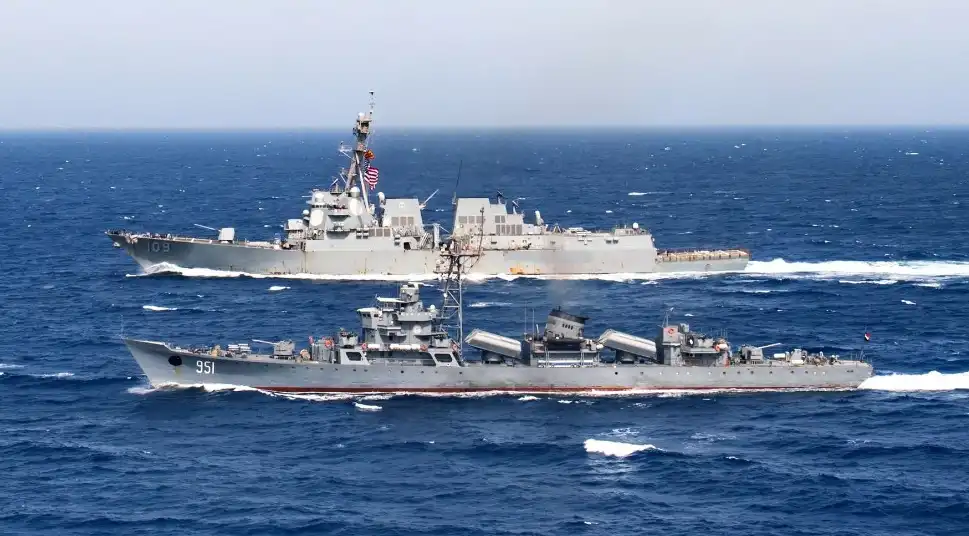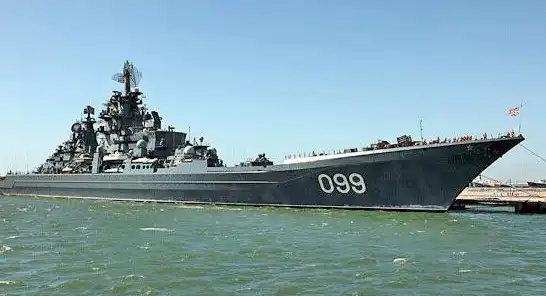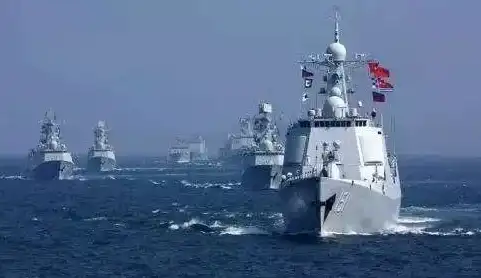Who can compete with the overlord of the sea
Military strength has always been an important criterion for measuring a country's comprehensive strength. A strong military force can not only maintain domestic stability and security but also deter external aggression to a certain extent, ensuring that national interests are not violated.
When the People's Republic of China was founded, China's naval forces were weak and their equipment was outdated. However, with the great attention and strong support of the state, the Chinese Navy has gradually grown and become stronger.
In today's world stage, the United States, Russia and China are undoubtedly the three countries with the strongest military strength, and the number and technical level of their warships have become the focus of attention of all countries.

As a global military superpower, the United States has an undeniable naval power. According to statistics, the US has over 220 warships, including many nuclear-powered aircraft carriers. These aircraft carriers are the pride of the US Navy due to their powerful range and combat effectiveness.
The United States Navy has a global reach, with its warships patrolling both the Pacific and Atlantic oceans.
Russia, as the country that inherited the bulk of the Soviet military legacy, also has a naval strength that cannot be ignored. Although it has encountered many economic difficulties, Russia still maintains a sizable naval force.
Russia currently has 102 warships, including many cruisers and destroyers with powerful combat capabilities. These warships not only possess long-range strike capabilities but can also effectively respond to various threats from the sea.

China, with a long history, civilization, and a large population, has seen remarkable achievements in the construction of its navy in recent years.
The Chinese Navy has undergone astounding and rapid development, evolving from near-shore defensive capabilities to a formidable naval force capable of executing distant-sea combat operations.
According to statistics released by the US side, the number of Chinese naval vessels has exceeded 300, a figure that is not only impressive in itself, but also indicative of the vigor and determination that underlies the development of the Chinese navy.
China's navy is developing rapidly thanks to the country's sustained economic growth and continuous advancement in science and technology.
China has already made substantial breakthroughs in the technology of warship construction and is able to independently design and build large surface combat ships including aircraft carriers.
From various tests from the Liaoning to the Shandong and Fujian aircraft carriers, to the potential emergence of new aircraft carriers in the future, the path for the aircraft carriers of China's navy is getting wider and wider.
At the same time, China has also achieved remarkable results in the development of destroyers, frigates and other ships. Take the Type 055 guided missile destroyer as an example. This destroyer not only has strong air defense, anti-missile, anti-submarine and other combat capabilities, but also its informatization level has reached the world's advanced level.
These enhanced capabilities further enable the Chinese Navy to manage complex sea and air situations more calmly.

Of course, we should have a sober understanding that compared to military powers such as the US and Russia, the Chinese Navy still has a certain gap in its overall strength.
This gap is not only reflected in the number and performance of warships, but also in combat experience and the quality of personnel.
Therefore, the Chinese Navy needs to continue to make efforts to strengthen training and exercises, and improve the combat capability and comprehensive qualities of officers and soldiers in order to better safeguard the country's marine rights and interests overseas.
